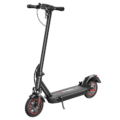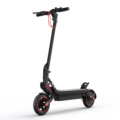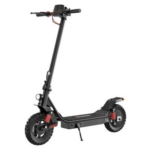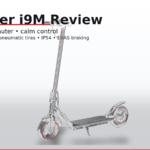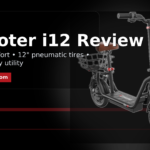- Home
- Scooters
- Electric Scooters
- iScooter i10
iScooter i10
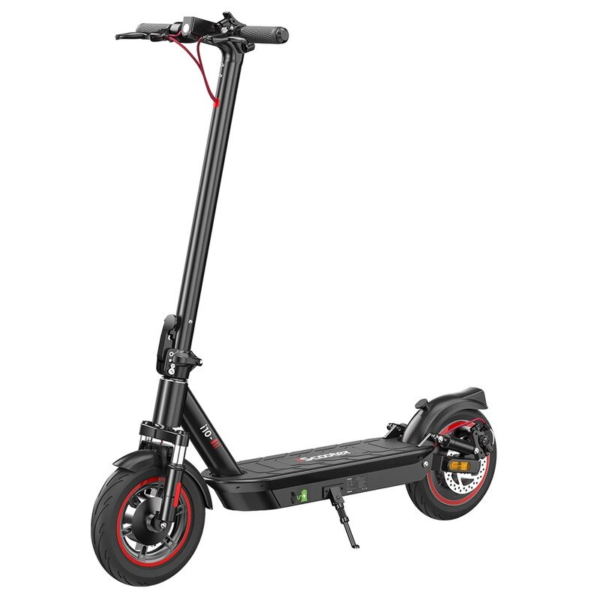

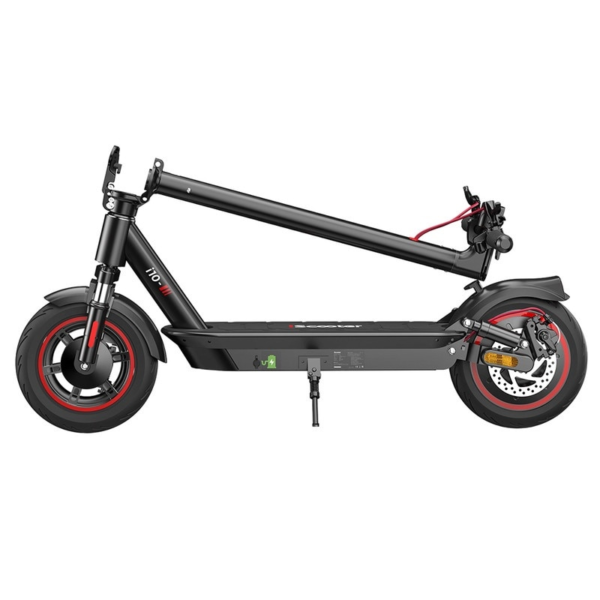
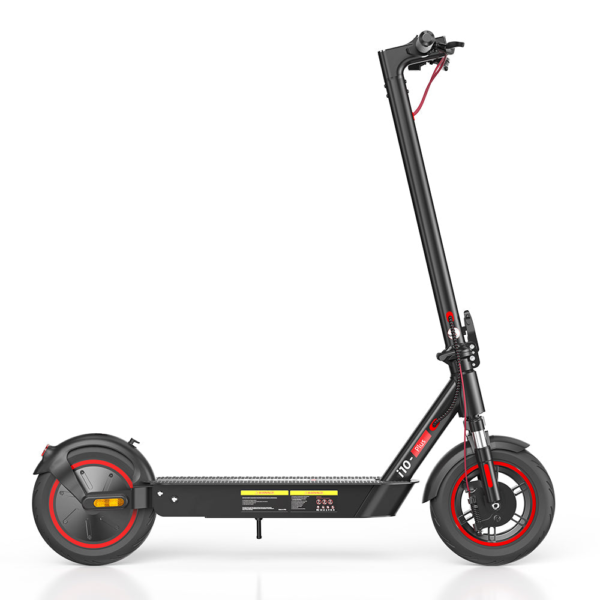
- Battery Range: 28 miles (45 km)
- Top Speed: 25 mph (40 km/h)
- Motor Power: 650 W rear hub
- Weight Capacity: 264 lb (120 kg)
- Charging Time: ~6–8 h
- Scooter Weight: 44.0 lb (20.0 kg)
PROS
- Dual suspension smooths rough bike lanes
- EBAS + rear disc for confident stops
- LED display with 4 ride modes
- RWD traction with 10″ air tires
- IP54 splash resistance
CONS
- No turn signals
- Range depends on speed/terrain
- Pneumatic tires need pressure care
- Not the lightest in its class

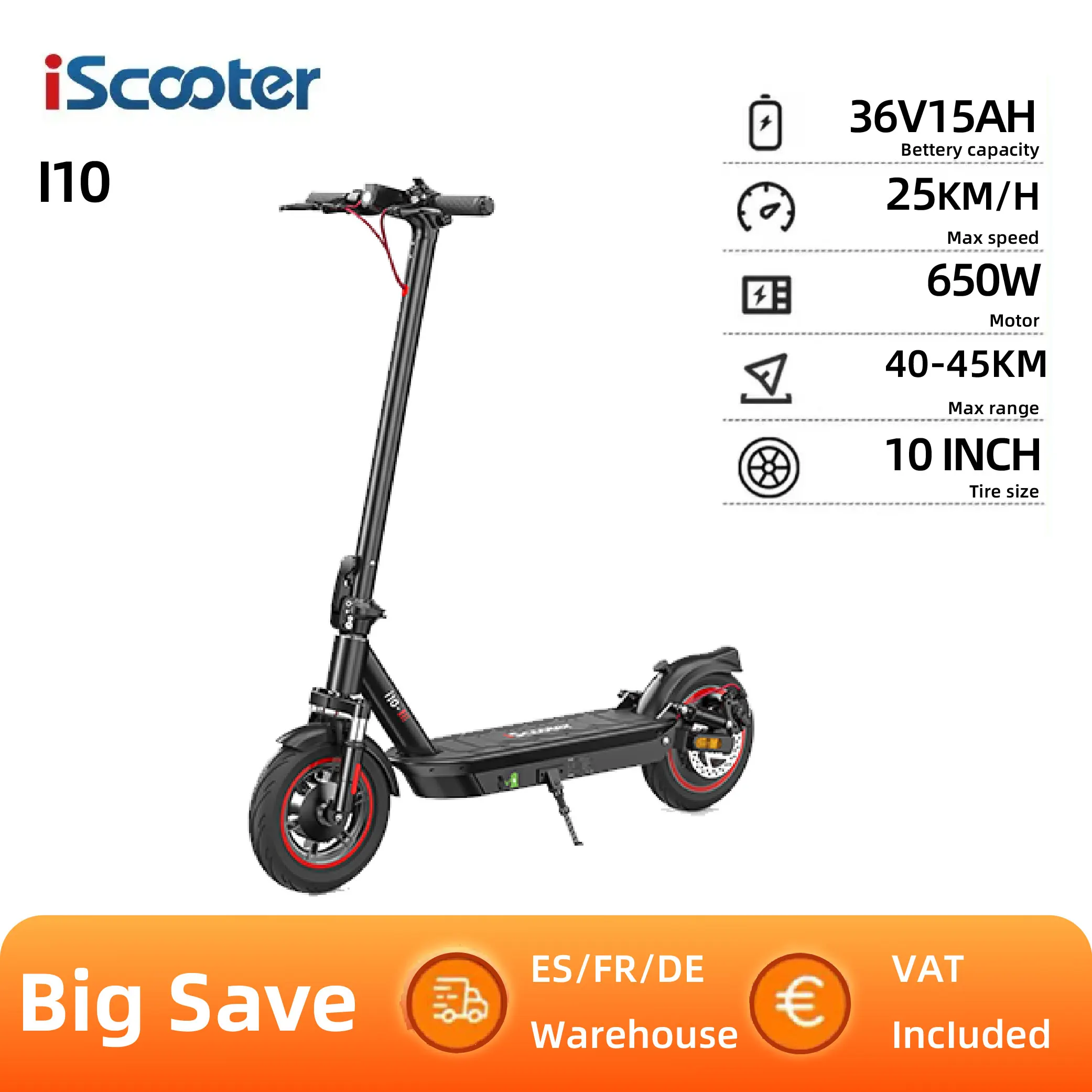

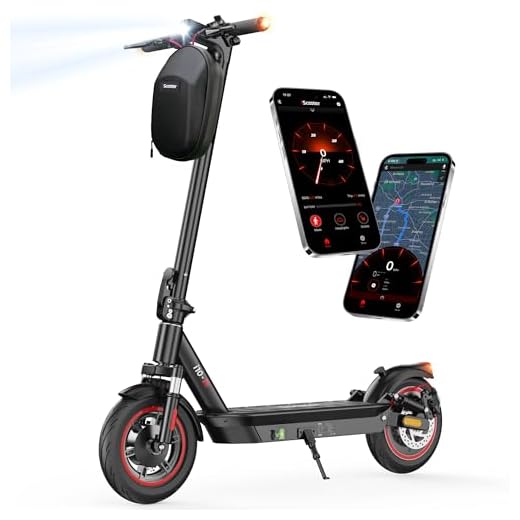
Table of contents
- What Is the iScooter i10?
- How the iScooter i10 Works
- Key Specifications
- Design & Build Quality
- Performance Fundamentals
- Battery, Range & Efficiency
- Ride Quality & Comfort
- Braking & Safety Features
- Portability & Daily Usability
- Maintenance & Care
- Weather & Seasonal Considerations
- iScooter i10 vs Alternatives
- Who the iScooter i10 Is (and Isn’t) For
- FAQs
- Glossary
- Final Thoughts
Looking for a practical, confidence-building first scooter that still feels lively? The iScooter i10 blends a punchy 650W rear-drive motor, 10-inch pneumatic tires, and dual suspension with a simple thumb throttle and app control. If you’re also considering a lighter option for short hops, the iScooter i8 is a compact sibling worth comparing.
What Is the iScooter i10?
The iScooter i10 is a city-focused, foldable electric scooter built around an accessible power curve and easy handling. It targets short to medium urban trips, shared-elevator apartments, and mixed travel that may include a bus, tram, or a short car trunk hop. Importantly, the model keeps the rider experience simple: rear-wheel drive for stable launches, a clear LED cockpit, and an app that lets you tweak start mode, speed limit, and cruise.
Because it uses 10-inch air-filled tires plus front and rear shock absorbers, the i10 handles chewed-up asphalt and curb cuts better than many entry commuter models. Moreover, the frame and control layout feel familiar within minutes. Yet it still offers room to grow: four speed modes, electronic braking support (E-ABS/regen), and a mechanical rear brake deliver both fine control in traffic and dependable stopping power when needed.
How the iScooter i10 Works
At its core, the i10 is a small electric drive system wrapped in a compact chassis. Here is the simple version, with light analogies to keep it clear:
- Motor (rear hub, 650W): Think of a quiet, sealed bicycle hub that pushes from behind. Because the motor is in the rear wheel, launches feel planted, especially on paint lines or damp patches. Power delivery favors smooth roll-on rather than jerkiness, which helps new riders.
- Controller (the “brain”): This is the traffic cop between battery, throttle, and motor. When you press the thumb throttle, the controller meters current to the motor in measured steps. Four speed modes cap power and speed to match your comfort level and route.
- Battery (42V, 15Ah): Picture a compact pack of many small cells working together. The controller draws energy from this pack and, in turn, the pack charges from an external charger. Smart battery management helps guard against overcharge and over-discharge.
- Throttle (thumb press): You gently push a small lever with your right thumb. Because throttle is analog, you can creep forward, cruise, or accelerate more decisively as traffic opens.
- Brakes (E-ABS + rear mechanical): The front electronic brake is like gentle engine braking; it slows the wheel by using the motor as a retarder (regenerative effect). The rear mechanical brake adds stronger bite when you squeeze the lever. Together, the two form your main stopping tools.
This mix puts emphasis on predictable behavior. Consequently, new riders feel in control early, while experienced commuters appreciate the i10’s calm responses in tight city gaps.
Key Specifications
General
| Item | Value |
|---|---|
| Model | iScooter i10 |
| Intended use | Urban/commuter |
| Drive | Rear-wheel hub motor |
| Speed modes | 4 |
Performance & Power
| Item | Value |
|---|---|
| Motor power | 650 W (rear hub) |
| Top speed (region/setting dependent) | Up to 25 mph (40 km/h) |
| Cruise control | Yes |
Battery, Charging & Electrical
| Item | Value |
|---|---|
| Battery | 42 V, 15 Ah |
| Charge time | ~6–8 hours |
| Battery management | Smart BMS (over/under-voltage protection) |
| App support | iScooter app (iOS/Android) |
Build & Dimensions
| Item | Value |
|---|---|
| Tire type & size | 10 in pneumatic (≈25.4 cm) |
| Suspension | Front & rear shock absorbers |
| Weight | 44 lb (20 kg) |
| Max rider load | 264 lb (120 kg) |
| Unfolded size | ≈45.2 × 19 × 47.2 in (115 × 48.5 × 120 cm) |
| Folded size | ≈45.2 × 19 × 21.2 in (115 × 48.5 × 54 cm) |
| Foldable handlebars | No |
| Adjustable stem | No |
Safety & Control
| Item | Value |
|---|---|
| Front brake | Electronic E-ABS (regen) |
| Rear brake | Mechanical drum (lever-actuated) |
| Lights | Front LED + rear LED |
| Reflectors | Yes |
| Water resistance | IP54 |
Features & Extras
| Item | Value |
|---|---|
| Display | Multi-function LED |
| Throttle | Right-side thumb press |
| Kickstand, mudguards | Included |
| App functions | Lock/unlock, lights, start mode, max speed, cruise, and more |
Warranty & Compliance
| Item | Value |
|---|---|
| Limited warranty | 12 months (typical brand policy) |
| Regulatory | Consumer e-scooter compliance by region; observe local rules |
Specification source: official iScooter i10 page (dimensions, brakes, app, IP rating, battery, modes). Minor phrasing simplified for clarity.
Design & Build Quality
The i10’s frame follows a proven commuter layout: a straight stem, rectangular deck, and swingarm-style rear section. Because the battery sits inside the deck, the center of gravity stays low. That’s useful in stop-and-go traffic, when micro-adjustments with your ankles and knees keep the scooter tracking straight.
Fit-and-finish is what you expect at this class: neat welds, consistent paint, and practical hardware. The mudguards are reinforced to tolerate the odd bag scuff or curb splash. Additionally, the deck rubber offers a grippy, wipe-clean surface that doesn’t feel spongy. There’s no stem height adjuster or fold-out bars to rattle, which reduces the number of moving parts that need attention.
Up top, the cockpit is simple. The LED display shows speed, mode, battery, and light/cruise icons. The throttle has a short, linear throw. Moreover, the brake lever pull is light and predictable, with clear contact point feel as the rear drum engages. Cable routing is tidy, and the included kickstand folds smoothly without slop.
Performance Fundamentals
Acceleration feel: The i10’s launch stays smooth rather than jumpy. Because power is rear-biased, traction off the line feels secure. In Sport mode, it pulls briskly from walking pace up to neighborhood limits without sudden surges. In Eco or lower modes, the scooter meters current more conservatively, which helps new riders practice throttle control.
Cruising stability: The combination of 10-inch pneumatic tires and dual suspension helps the i10 sit calmly at urban speeds. On flat asphalt, straight-line tracking is neutral, and the stem feels controlled. Because there’s no stem height adjust, taller riders will still want to keep their shoulders relaxed and elbows soft to absorb any high-frequency buzz from chipseal or painted lines.
Hill behavior (~7–10% grades): On modest hills, the i10 maintains speed respectably in Sport mode, especially with a mid-weight rider. However, on longer 7–10% grades, expect speed to fade gradually. That’s normal for this power class. To help, begin climbs at your target speed, stay centered over the deck, and avoid over-throttling if traction feels light.
Battery, Range & Efficiency
The pack is rated at 42 V, 15 Ah. Although riding style varies wildly, you can use a simple rule for range expectations:
- Conservative urban pace, lighter rider, mild temps (65–75°F / 18–24°C): You may approach the rated range on flat paths.
- Mixed speeds with stops, average rider, mixed temps: Expect less than the brochure number, as frequent accelerations cost energy.
- Fast commuting, heavy rider, hills, wind, or cold (<45°F / 7°C): Plan for a notable reduction in total miles.
Because air-filled tires and dual suspension encourage speed over rough sections, smooth throttle habits become your best range tool. As a result, try to “pace” into green lights, hold steady speeds on flats, and back off early when you see a stop ahead. Furthermore, check tire pressure weekly; soft tires chew energy.
Charging best practices: Use the supplied charger and keep the charge port dry and closed when not charging. The charger light turning green signals a full charge; however, avoid leaving the pack on continuous charge for day-long stretches. Simple habits like unplugging within a reasonable window and storing the scooter at moderate temperatures will help preserve capacity over time.
Ride Quality & Comfort
Because the iScooter i10 rolls on 10-inch pneumatic tires, it filters cracks and seams better than small solid-tire designs. Moreover, the front and rear shocks keep the chassis from pogo-ing on rough patches. You still feel city reality—potholes and expansion joints—but your feet aren’t chattering with every ripple.
Ergonomics are straightforward: the deck length and width are adequate for staggered foot placement. Most riders will stand with the front foot across the deck and the rear foot angled, using hips to steer. Because the stem is fixed height, taller riders should bend knees slightly and keep wrists in neutral alignment for long stretches.
Stem flex: All folding commuter scooters flex a little at the hinge and mast under load. On the i10, that flex is modest and predictable. It doesn’t affect line holding during casual cornering, and it’s easy to ride around by weighting the deck and staying light on the bars.
Braking & Safety Features
The i10 uses two braking systems: an electronic E-ABS effect at the front (regenerative) and a rear mechanical drum with lever control. In practice, you’ll use both. Squeeze the lever progressively, and you’ll feel a gentle initial drag as the motor retards, followed by firmer bite from the drum. On clean, dry asphalt, this blend offers stable deceleration without front-wheel skittishness.
Because traction varies, start by practicing threshold braking in a safe lot. Then add complexity: lane paint, manhole covers, and light gravel. Consequently, you’ll learn how the scooter communicates grip. The LED headlight is bright enough for “be seen” duty and slow-pace neighborhood rides at dusk. For true night commuting, consider reflective clothing and an auxiliary helmet light to widen your beam pattern. The IP54 rating means splashes are okay, but the scooter is not for deep puddles or pressure washing.
Portability & Daily Usability
At 44 lb (20 kg), the iScooter i10 is carryable for short stair flights and train platforms, though not featherweight. The single-action folding joint lowers the mast quickly, and the package lies tidy in car trunks. Because the handlebars don’t fold, the bar width remains the same in storage; keep that in mind for narrow closets.
Daily routines are simple. Check tire pressure, glance at the axle hardware, and verify the latch locks positively at full upright. Because the deck sits mid-height, curbs require a slow roll or a walking-speed dismount. For security, bring a compact U-lock or a reputable folding lock. Although the app can lock the scooter electronically, physical locks deter opportunistic theft far better.
Maintenance & Care
You don’t need a shop background to keep the i10 healthy. A few minutes each week prevents most issues.
Quick routine (every 1–2 weeks):
- Tire pressure: Keep to the recommended range printed on the sidewalls. Proper pressure preserves range, handling, and puncture resistance.
- Brake check: Squeeze the lever. You should feel firm engagement mid-pull, not sponginess. If the rear drum drags slightly, recentre the caliper and ensure the wheel spins freely.
- Fasteners: Inspect the stem latch hardware, axle nuts, and fender screws. Retighten only to firm—don’t overtighten small bolts.
- Lights & reflectors: Test headlight, tail light, and reflectors for visibility.
Monthly habits (or ~150–200 miles / 240–320 km):
- Brake adjustment: Follow the brand’s guidance to centre the drum’s actuation and eliminate squeal or drag.
- Tire inspection: Look for cuts, embedded grit, and sidewall scuffs. Replace when tread looks thin or casing threads appear.
- Firmware/app check: Open the app, confirm settings (start mode, speed), and scan for updates or stored error codes. Small software fixes can improve reliability.
Battery care:
- Charging window: It’s fine to charge to full before longer rides. For everyday use, avoid leaving the scooter on the charger for extended periods after the light turns green. Store at moderate temperature with a partial charge if not riding for weeks.
Weather & Seasonal Considerations
Rain: IP54 helps with light rain and surface spray, yet caution matters. Painted lines, leaves, and metal plates get slick. Therefore, lower speed, lengthen your following distance, and straighten the bars before braking firmly. After wet rides, wipe the deck and keep the charge port cover sealed until dry.
Heat: Hot days thin tire rubber and warm the controller. Consequently, sustained top-mode cruising in high heat can raise temps. Use a slightly lower mode on very hot days and park in the shade when possible.
Cold: Below ~45°F (7°C), batteries supply less current and internal resistance rises. As a result, range drops. Plan shorter legs, inflate tires to the high end of the recommended range, and accept a gentler pace when the pack is cold.
iScooter i10 vs Alternatives
Electric scooters tend to fall into broad families: last-mile compacts, commuters, performance commuters, and off-road/dual-motor machines. The iScooter i10 sits in the heart of the commuter class.
- When the iScooter i10 excels: Daily city rides with mixed pavement, riders who value air-filled tires and dual suspension at an approachable weight, and anyone who wants a predictable control layout. Because the motor is rear-drive, traction at low speed is friendly, especially in damp conditions.
- When a basic last-mile compact might win: If your building has four floors and no elevator, or you must carry the scooter frequently, a lighter, smaller model can save your shoulders.
- When a performance commuter fits better: If you face long 7–10% hills or need sustained higher speeds on wide boulevards, a larger motor and battery will hold pace more easily. Those models cost and weigh more, but they widen your ride envelope.
- When off-road/dual-motor makes sense: For trail forays, rough fire roads, or heavy riders on steep gradients, wide tires, more suspension travel, and dual motors may be worth the heft and maintenance.
Who the iScooter i10 Is (and Isn’t) For
Ideal for:
- New riders who want a steady learning curve and sensible features.
- Daily commuters crossing a few miles of urban streets with average grades.
- Students who value confidence at low to mid speeds and a clean, low-maintenance design.
- Multi-modal travelers who carry their scooter into a car trunk or onto a train a few times a week.
Not ideal for:
- Frequent stair carriers who must lug the scooter up multiple flights daily.
- Steep-hill riders seeking high-speed climbs day after day.
- Speed seekers who mainly ride open roads and want sport-bike acceleration.
FAQs
1) What’s the real top speed of the iScooter i10?
It’s rated up to 25 mph (40 km/h) in faster settings. Actual top speed depends on rider weight, temperature, road grade, and regional limits.
2) How far can I go on one charge?
The brand lists up to 28 miles (45 km) under favorable conditions. In mixed city use, plan for less. Your habits—smooth throttle, proper tire pressure, steady cruising—matter as much as terrain.
3) Does the i10 have regenerative braking?
Yes. The front electronic brake applies a retarding force (regen/E-ABS). You’ll still use the rear mechanical brake for stronger stops and fine control.
4) Can I ride the i10 in the rain?
It carries an IP54 rating for splash resistance. Avoid deep puddles and power washing, ride slower on slick surfaces, and dry the scooter before charging.
5) What app settings actually help?
The app lets you set start mode (zero or non-zero), adjust max speed, and enable cruise. For beginners, non-zero start can reduce accidental launches. Locking the scooter in the app adds a security layer but should not replace a physical lock.
6) Where can I read an “iScooter i10 overview”?
You’re reading one now. This overview covers design, ride feel, brakes, range, and care tips in a balanced, beginner-friendly format.
7) What’s the best tire pressure?
Follow the sidewall guidance and check weekly. Proper pressure improves range, reduces flats, and keeps the steering accurate. Adjust within the recommended window for rider weight and comfort.
Glossary
- Amp-hour (Ah): Battery capacity measure. Higher Ah generally means more stored energy.
- Watt-hour (Wh): Energy measure (volts × amp-hours). Useful for comparing pack sizes.
- Controller: Electronics that meter power between battery and motor based on throttle and settings.
- Rear-wheel drive: Motor pushes from behind; often calmer traction on launches.
- Regen / E-ABS: Electronic braking that slows the motor; complements the mechanical brake.
- Drum brake: Enclosed brake at the wheel; low maintenance, consistent in wet.
- Thumb throttle: Right-hand lever you push to accelerate.
- Stem flex: Slight mast movement under load; normal to a degree on folders.
- IP rating (IP54): Dust and water splash resistance level; not submersible.
- BMS (Battery Management System): Protects the pack from over/under-voltage and over-current.
- Zero start: Throttle works from a standstill.
- Non-zero start: Throttle activates only after a small push-off; helps avoid accidental launches.
- Pneumatic tire: Air-filled tire that cushions bumps and improves grip.
- Speed modes: Controller presets that cap power and speed.
- Cruise control: Holds a steady speed to reduce thumb fatigue on long flats.
Final Thoughts
The iScooter i10 aims squarely at practical commuting. It pairs air-filled tires, dual suspension, and a forgiving control scheme with a compact fold and reasonable weight. Moreover, its braking system is confidence-building, and the app makes useful tweaks simple. It is not a hill-charge bruiser or an ultra-light last-miler. Instead, it’s a friendly, durable city scooter that encourages you to ride often and maintain it easily. If that’s your use case, you’ll likely appreciate how quietly and reliably the i10 fits your week.
Specifications
General
| Model The Model specifies the exact version or name of the scooter. It helps identify its unique design, features, and specifications within the manufacturer’s product line. Knowing the model makes it easier to compare options, find compatible accessories, or look up support information. | i10 |
| Brand The Brand identifies the manufacturer or company that designs and produces the scooter. A trusted brand is a sign of quality, reliability, and good customer support. Well-known brands often have higher standards for safety, performance, and after-sales service, giving you more confidence in your purchase. | iScooter |
| Release Date The Release Date indicates when the scooter model was officially launched on the market. This helps you know how current the design, technology, and features are. A newer release date often means updated components, improved performance, and the latest safety or smart features. | 17 November 2025 |
| Recommended Age Recommended Age indicates the minimum age range that the scooter is designed for, based on safety, size, and ease of use. Following the recommended age helps ensure that riders can handle the scooter’s speed, weight, and controls comfortably and safely. Always check local laws and use protective gear, especially for younger riders. | Recommended 14+ |
Performance & Power
| Motor Power (Wattage) What it means: The motor power, measured in watts (W), shows how strong the scooter’s electric motor is. Why it matters: Higher wattage usually means better acceleration, more torque, and improved performance on hills or rough terrain. For example, a 250W motor is good for flat city roads and light riders, while a 500W or 1000W motor provides more power for faster speeds or climbing steep inclines. | 650 W rear hub motor |
| Top Speed The Top Speed indicates the maximum speed that the scooter can reach under optimal conditions. It’s usually measured on level ground with a fully charged battery and an average rider weight. A higher top speed allows you to travel longer distances faster, but always ensure you ride within legal speed limits and your personal comfort zone for safety. | 25 mph (40 km/h) |
| Battery Capacity Battery Capacity refers to the total amount of energy the scooter’s battery can store, usually measured in ampere-hours (Ah) or watt-hours (Wh). A higher battery capacity means you can ride longer distances on a single charge, reducing the need for frequent recharging. Keep in mind that actual range can vary depending on rider weight, terrain, speed, and weather conditions. | 42 V 15 Ah |
| Estimated Range per Charge The Estimated Range per Charge indicates the average distance the scooter can travel on a single full battery charge. This range is calculated under optimal conditions, such as flat terrain, moderate speed, and average rider weight. Real-world range may vary depending on riding style, terrain, weather, and load. A longer range means fewer recharges and greater freedom for longer trips. | Up to 28 miles (45 km) |
| Hill Climb Ability Hill Climb Ability describes the maximum incline or slope that the scooter can handle while maintaining stable performance. It’s typically expressed as a percentage or in degrees. A higher hill climb rating means the scooter can tackle steeper hills without losing too much speed or power. Actual climbing performance may vary based on rider weight, battery charge, and terrain conditions. | Not specified |
| Drive System The Drive System refers to how power from the motor is delivered to the wheels. Electric scooters typically use either a hub motor (directly integrated into the wheel) or a chain/belt drive system. A high-quality drive system ensures smooth acceleration, efficient power transfer, and low maintenance. The choice of drive system affects performance, noise level, and overall ride experience. | Rear wheel drive (RWD) |
Charging & Electrical
| Charging Time Charging Time indicates how long it takes to fully recharge the scooter’s battery from empty to 100% using the standard charger provided. Faster charging means less downtime and more time on the road. Actual charging time may vary slightly depending on battery capacity, charger output, and environmental conditions. | Approx. 6–8 hours |
| Battery Type Battery Type refers to the specific technology used in the scooter’s battery, which affects performance, lifespan, weight, and charging time. Most modern electric scooters use high-quality lithium-ion (Li-ion) batteries because they offer a good balance of energy density, durability, and low maintenance. A reliable battery type ensures consistent power delivery and longer riding ranges. | Lithium-ion with Smart BMS |
| Removable Battery A Removable Battery means the battery pack can be easily detached from the scooter for convenient charging and replacement. This feature allows you to charge the battery separately, swap it with a spare for extended range, or securely store it indoors in extreme weather. Removable batteries add flexibility and make it easier to keep your scooter powered up wherever you are. | Non-removable internal battery (fixed pack) |
| Regenerative Braking Regenerative Braking is an energy-saving feature that converts some of the energy normally lost during braking back into battery power. When you slow down or brake, the motor works in reverse to generate electricity, which helps extend the scooter’s range and improves overall efficiency. This system also reduces wear on traditional brake components, leading to lower maintenance over time. | Yes (regen via EBAS electronic brake) |
| Lighting Lighting refers to the built-in front and rear lights that enhance visibility and safety when riding in low-light conditions or at night. Good lighting helps you see the road ahead and ensures that other road users can see you. Many scooters include LED headlights, taillights, and sometimes brake lights or side reflectors for added safety and compliance with local traffic regulations. | LED headlight + rear LED/brake + reflectors |
Build & Dimensions
| Scooter Weight Scooter Weight refers to the total weight of the scooter when fully assembled, including the battery. This affects how easy it is to carry, lift, and store the scooter when not in use. A lighter scooter is more portable and convenient for commuting, especially if you need to carry it upstairs or onto public transport. Keep in mind that a sturdy frame and quality components may add to the weight but also contribute to better durability and ride stability. | 44.0 lb (20.0 kg) |
| Maximum Rider Weight Maximum Rider Weight indicates the highest rider weight that the scooter is designed to safely support while maintaining optimal performance and stability. Staying within this limit helps ensure reliable acceleration, braking, and climbing ability, and it protects the frame, suspension, and motor from excessive strain. Exceeding the recommended limit may reduce performance and increase wear on components. | 264 lb (120 kg) |
| Deck Size Deck Size refers to the dimensions of the scooter’s standing platform. A wider and longer deck provides more foot space, allowing you to stand comfortably and adjust your stance while riding. A well-sized deck improves balance and stability, especially on longer rides or at higher speeds. Compact decks, on the other hand, help keep the scooter lightweight and portable. | Wide, low deck; neutral steering |
| Handlebar Height Handlebar Height refers to the distance from the deck to the handlebars, which affects your riding posture and comfort. An appropriate handlebar height helps you maintain good balance, reduces strain on your back and arms, and makes steering more comfortable. Some scooters have adjustable handlebars to fit riders of different heights, while others have a fixed height for a streamlined design. | Fixed bar height |
| Folding Mechanism The Folding Mechanism describes how easily and securely the scooter can be folded for carrying and storage. A well-designed folding system lets you quickly collapse the scooter into a compact size, making it convenient to transport on public transit, store under a desk, or fit into a car trunk. Look for sturdy latches and safety locks to ensure the scooter stays firmly in place when folded or unfolded. | Simple quick-fold |
| Dimensions Folded Dimensions indicate the size of the scooter when it’s fully folded. This measurement shows how much space the scooter will take up when stored or carried, making it easier to check if it will fit in your car trunk, under a desk, or in a closet. Compact folded dimensions are ideal for commuters who need to bring their scooter on public transport or store it in tight spaces. | Approx. 45.2 × 19 × 21.2 in folded / 45.2 × 19 × 47.2 in unfolded (115 × 48.5 × 54 cm; 115 × 48.5 × 120 cm) |
| Material Material refers to the primary construction materials used for the scooter’s frame and key components. High-quality materials like aircraft-grade aluminum, reinforced steel, or durable composites provide strength, stability, and a lighter overall weight. A sturdy material ensures the scooter can handle daily wear and tear while maintaining safety and performance. | Aluminum alloy frame |
Safety & Control
| Brake Type(s) Brake Type(s) describe the braking systems the scooter uses to help you slow down or stop safely. Common brake types include mechanical brakes (like drum or disc brakes), electronic brakes, and foot brakes. Many scooters combine multiple braking systems for added safety and shorter stopping distances. The type and quality of brakes affect your control, especially when riding at higher speeds or on slopes. | Front EBAS electronic + rear disc |
| Suspension Suspension refers to the system that absorbs shocks and vibrations while riding, providing a smoother and more comfortable ride over uneven or rough surfaces. Scooters may have front suspension, rear suspension, or dual suspension for better shock absorption and stability. Good suspension helps reduce rider fatigue and improves control, especially when riding on bumpy roads or off-road paths. | Front & rear suspension |
| Tire Type Tire Type refers to the kind of tires the scooter uses, which directly affects ride comfort, traction, and maintenance. Common types include solid (airless) tires, pneumatic (air-filled) tires, or hybrid options. Pneumatic tires offer better shock absorption and a smoother ride on rough surfaces, while solid tires are puncture-proof and require less upkeep. The right tire type helps ensure safe handling and a comfortable ride in different conditions. | Pneumatic street tires |
| Tire Size Tire Size indicates the diameter and width of the scooter’s tires, which affect ride comfort, stability, and how well the scooter handles different terrains. Larger tires generally offer better shock absorption and a smoother ride over bumps and rough surfaces, while smaller tires keep the scooter lighter and more portable. Choosing the right tire size helps ensure a balance between agility and comfort. | 10-inch |
| Kickstand The Kickstand is a built-in stand that allows you to park your scooter upright when it’s not in use. A sturdy kickstand keeps the scooter stable and prevents it from tipping over, protecting it from scratches and damage. It also makes storing and accessing your scooter more convenient, whether you’re at home, work, or on the go. | Side kickstand |
| Water Resistance Rating Water Resistance Rating indicates how well the scooter is protected against water and moisture, usually shown as an IP (Ingress Protection) rating. This rating helps you understand whether the scooter can handle light rain, splashes, or wet roads without damage. While most scooters are not fully waterproof, a good water resistance rating adds peace of mind when riding in changing weather conditions. Always avoid deep puddles or submerging the scooter to protect its electrical components. | IP54 body |
Features & Extras
| Display/Console The Display (or Console) shows important real-time information about your ride, helping you monitor your scooter’s status at a glance. Typical displays show speed, battery level, distance traveled, and riding mode. Some models also include additional features like Bluetooth connectivity, app integration, or backlighting for better visibility at night. A clear and easy-to-read display enhances safety and convenience on every trip. | Multi-functional LED display |
| Ride Modes Ride Modes refer to the different speed and power settings you can choose to match your riding style or road conditions. Common modes include eco for maximum range and energy efficiency, standard for everyday balance, and sport or turbo for higher speed and stronger acceleration. Switching between ride modes allows you to customize performance, conserve battery, and ride safely in various environments. | 4 modes |
| Smart App Connectivity Smart App Connectivity lets you pair your scooter with a dedicated mobile app via Bluetooth. Using the app, you can monitor real-time ride stats like speed, battery level, and range, adjust settings such as ride modes or cruise control, lock the scooter for added security, and sometimes receive firmware updates. This feature adds convenience and allows you to personalize your riding experience right from your smartphone. | iScooter App (iOS/Android) |
| Anti-Theft System The Anti-Theft System helps protect your scooter from unauthorized use or theft. This feature can include built-in alarms, electronic motor locks, GPS tracking, or remote locking through a mobile app. A good anti-theft system provides peace of mind when parking your scooter in public spaces, adding an extra layer of security to safeguard your investment. | App lock |
| Cruise Control Cruise Control allows you to maintain a steady speed without continuously holding the throttle. This feature makes longer rides more comfortable by reducing hand fatigue and providing a smoother, more relaxed riding experience — especially on flat, open roads or bike lanes. For safety, cruise control can usually be easily activated or deactivated while riding. | Yes (cruise control) |
| Accessories Included Accessories Included lists the additional items that come with the scooter to enhance your riding experience and convenience. Common accessories may include a charger, kickstand, bell, lights, phone holder, or carrying strap. These extras add value by making your scooter safer, easier to use, and ready to ride straight out of the box. | Bell, reflectors, charger |
Warranty & Compliance
| Warranty Period The Warranty Period indicates how long the manufacturer guarantees the scooter against defects in materials and workmanship under normal use. A good warranty provides peace of mind, showing the brand’s confidence in its product quality. Always check what parts are covered, such as the frame, battery, and motor, and follow the maintenance guidelines to keep your warranty valid. | 12 months (region-dependent) |
| Certifications Certifications confirm that the scooter meets specific safety, quality, and environmental standards set by recognized organizations or regulatory bodies. Common certifications may include CE, RoHS, UL, or other local compliance marks, depending on your region. These certifications ensure that the scooter is manufactured to high standards and is safe and legal to use in your country. | Local micromobility compliance |
Price Comparison







